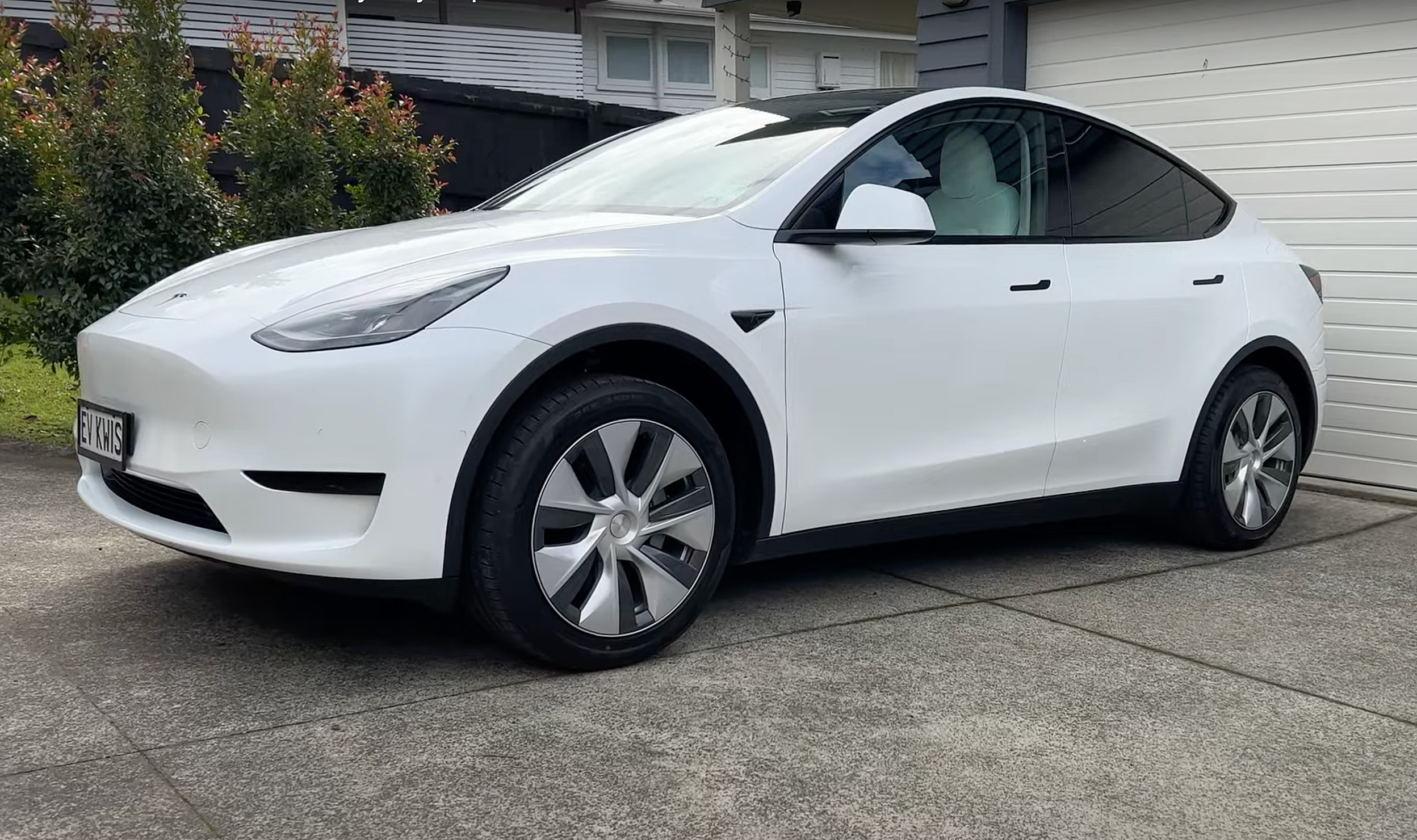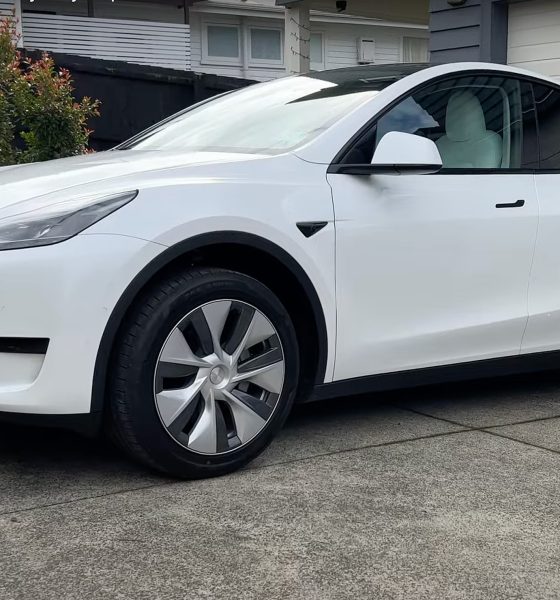

News
Tesla revenue from NZ EV rebates hint at potential IRA benefits [Feature]
Tesla doubled its revenue after New Zealand’s Clean Car policy introduced rebates to decarbonize its fleet. Tesla New Zealand’s revenue hints at the potential benefits of the United States Inflation Reduction Act (IRA).
According to the company’s financial records, Tesla New Zealand’s (NZ) revenue for the 2022 calendar year was $499.5 million (USD$303.3), double the company’s $230.7 million (USD$140.1) revenue in 2021. New Zealand’s acting Transport Minister Kieran McAnulty believes the government’s Clean Car policy helped Tesla’s revenues double.
“With over 100,000 rebates granted since the scheme came into effect in 2021, we have one of the fastest uptakes of EVs in the world,” McAnulty said.
Tesla New Zealand’s revenues in the past show an increase in EV adoption. Tesla NZ’s revenue in 2020 was $66 million (USD$40 million) and increased to $230.7 million (USD$ 140.1 million) in 2021. Tesla Giga Shanghai definitely factors into the company’s increased revenues in New Zealand and Australia between 2020 and 2021. However, the New Zealand government’s EV rebates might have aided Tesla’s leap from $230.7 million to $499.5 million between 2021 and 2022.

“The cost of EVs has reduced significantly over the past couple of years. Several popular models are now available for $50,000 to $60,000, whereas previously EVs tended to be closer to $80,000. Rebates for used-import EVs will rise from $3450 to $3507.50 – as the supply of used-import EVs remains restricted. The increased rebates will encourage suppliers to continue to focus on securing supply for New Zealanders,” McAnulty commented.
The New Zealand Herald analyzed data that revealed Tesla benefited significantly from Clean Car policy rebates. Since 2021 when the policy began, 9,730 Teslas were purchased for a total of $83 million (USD$ 50.4 million) rebates paid to the people who bought the electric vehicles (EVs).
New Zealand’s government plans to update its Clean Car policy this year. The update will reduce rebates offered for new zero-emission vehicles—described as electric vehicles by the government—from $8,625 (USD$5238) to $7,015 (USD$4,260). New Zealand also changed rebates offered for used imports and disability vehicles while applying charges for specific emissions. New Zealand’s Clean Car Policy changes will apply from July 1, 2023.
The Inflation Reduction Act’s Potential Impact
New Zealand’s Clean Car Policy hints that people are willing to transition to electric vehicles for the right price. The Inflation Reduction Act (IRA) might yield the same results for Tesla and other EV manufacturers in the United States.
Elon Musk and the Tesla board seem well aware of the IRA’s potential impact on the electric vehicle and global auto market.
“The regulations here are still in flux and there continues to be updates, so this is just our best understanding at the moment. But we think on the order of $150 million to $250 million per quarter this year and growing over the course of the year as our volumes grow,” said Tesla’s Chief Financial Officer Zachary Kirkhorn at the Q4 2022 earnings call.
The IRA doesn’t just affect local automakers and their suppliers either. Companies worldwide involved in EV manufacturing or its supply chain have started investing in the United States to reap the benefits of the IRA. For instance, South Korean battery supplier LG Energy Solutions (LGES) has partnered with a few automakers to build cell manufacturing plants in the United States. LGES has battery plant agreements with Hyundai, Honda, and Ford. Tesla is prepared to take advantage of the IRA’s incentives as well.
“And part of the work we’re doing here, which is part of what this incentive package is trying to incentivize, is, as Elon mentioned, to move more manufacturing onshore in the United States, which is Tesla’s plans anyways. And so, I think we’re pretty well positioned over the coming years to take advantage of this.
“But then also part of what the goal of this incentive package is, is to improve adoption from our customers. And so, we also want to use these incentives to improve affordability as we think about what the price points are in our products going forward,” stated Kirkhorn.
The Teslarati team would appreciate hearing from you. If you have any tips, contact me at maria@teslarati.com or via Twitter @Writer_01001101.

News
Tesla (TSLA) receives “Buy” rating and $551 PT from Canaccord Genuity
He also maintained a “Buy” rating for TSLA stock over the company’s improving long-term outlook, which is driven by autonomy and robotics.

Canaccord Genuity analyst George Gianarikas raised his Tesla (NASDAQ:TSLA) price target from $482 to $551. He also maintained a “Buy” rating for TSLA stock over the company’s improving long-term outlook, which is driven by autonomy and robotics.
The analyst’s updated note
Gianarikas lowered his 4Q25 delivery estimates but pointed to several positive factors in the Tesla story. He noted that EV adoption in emerging markets is gaining pace, and progress in FSD and the Robotaxi rollout in 2026 represent major upside drivers. Further progress in the Optimus program next year could also add more momentum for the electric vehicle maker.
“Overall, yes, 4Q25 delivery expectations are being revised lower. However, the reset in the US EV market is laying the groundwork for a more durable and attractive long-term demand environment.
“At the same time, EV penetration in emerging markets is accelerating, reinforcing Tesla’s potential multi‑year growth runway beyond the US. Global progress in FSD and the anticipated rollout of a larger robotaxi fleet in 2026 are increasingly important components of the Tesla equity story and could provide sentiment tailwinds,” the analyst wrote.
Tesla’s busy 2026
The upcoming year would be a busy one for Tesla, considering the company’s plans and targets. The autonomous two-seat Cybercab has been confirmed to start production sometime in Q2 2026, as per Elon Musk during the 2025 Annual Shareholder Meeting.
Apart from this, Tesla is also expected to unveil the next-generation Roadster on April 1, 2026. Tesla is also expected to start high-volume production of the Tesla Semi in Nevada next year.
Apart from vehicle launches, Tesla has expressed its intentions to significantly ramp the rollout of FSD to several regions worldwide, such as Europe. Plans are also underway to launch more Robotaxi networks in several more key areas across the United States.
News
Waymo sues Santa Monica over order to halt overnight charging sessions
In its complaint, Waymo argued that its self-driving cars’ operations do not constitute a public nuisance, and compliance with the city’s order would cause the company irreparable harm.

Waymo has filed a lawsuit against the City of Santa Monica in Los Angeles County Superior Court, seeking to block an order that requires the company to cease overnight charging at two facilities.
In its complaint, Waymo argued that its self-driving cars’ operations do not constitute a public nuisance, and compliance with the city’s order would cause the company irreparable harm.
Nuisance claims
As noted in a report from the Los Angeles Times, Waymo’s two charging sites at Euclid Street and Broadway have operated for about a year, supporting the company’s growing fleet with round-the-clock activity. Unfortunately, this has also resulted in residents in the area reportedly being unable to sleep due to incessant beeping from self-driving taxis that are moving in and out of the charging stations around the clock.
Frustrated residents have protested against the Waymos by blocking the vehicles’ paths, placing cones, and “stacking” cars to create backups. This has also resulted in multiple calls to the police.
Last month, the city issued an order to Waymo and its charging partner, Voltera, to cease overnight operations at the charging locations, stating that the self-driving vehicles’ activities at night were a public nuisance. A December 15 meeting yielded no agreement on mitigations like software rerouting. Waymo proposed changes, but the city reportedly insisted that nothing would satisfy the irate residents.
“We are disappointed that the City has chosen an adversarial path over a collaborative one. The City’s position has been to insist that no actions taken or proposed by Waymo would satisfy the complaining neighbors and therefore must be deemed insufficient,” a Waymo spokesperson stated.
Waymo pushes back
In its legal complaint, Waymo stated that its “activities at the Broadway Facilities do not constitute a public nuisance.” The company also noted that it “faces imminent and irreparable harm to its operations, employees, and customers” from the city’s order. The suit also stated that the city was fully aware that the Voltera charging sites would be operating around the clock to support Waymo’s self-driving taxis.
The company highlighted over one million trips in Santa Monica since launch, with more than 50,000 rides starting or ending there in November alone. Waymo also criticized the city for adopting a contentious strategy against businesses.
“The City of Santa Monica’s recent actions are inconsistent with its stated goal of attracting investment. At a time when the City faces a serious fiscal crisis, officials are choosing to obstruct properly permitted investment rather than fostering a ‘ready for business’ environment,” Waymo stated.
News
Tesla FSD v14.2.2 is getting rave reviews from drivers
So far, early testers have reported buttery-smooth drives with confident performance, even at night or on twisty roads.

Tesla Full Self-Driving (Supervised) v14.2.2 is receiving positive reviews from owners, with several drivers praising the build’s lack of hesitation during lane changes and its smoother decision-making, among others.
The update, which started rolling out on Monday, also adds features like dynamic arrival pin adjustment. So far, early testers have reported buttery-smooth drives with confident performance, even at night or on twisty roads.
Owners highlight major improvements
Longtime Tesla owner and FSD user @BLKMDL3 shared a detailed 10-hour impression of FSD v14.2.2, noting that the system exhibited “zero lane change hesitation” and “extremely refined” lane choices. He praised Mad Max mode’s performance, stellar parking in locations including ticket dispensers, and impressive canyon runs even in dark conditions.
Fellow FSD user Dan Burkland reported an hour of FSD v14.2.2’s nighttime driving with “zero hesitations” and “buttery smooth” confidence reminiscent of Robotaxi rides in areas such as Austin, Texas. Veteran FSD user Whole Mars Catalog also demonstrated voice navigation via Grok, while Tesla owner Devin Olsen completed a nearly two-hour drive with FSD v14.2.2 in heavy traffic and rain with strong performance.
Closer to unsupervised
FSD has been receiving rave reviews, even from Tesla’s competitors. Xpeng CEO He Xiaopeng, for one, offered fresh praise for FSD v14.2 after visiting Silicon Valley. Following extended test drives of Tesla vehicles running the latest FSD software, He stated that the system has made major strides, reinforcing his view that Tesla’s approach to autonomy is indeed the proper path towards autonomy.
According to He, Tesla’s FSD has evolved from a smooth Level 2 advanced driver assistance system into what he described as a “near-Level 4” experience in terms of capabilities. While acknowledging that areas of improvement are still present, the Xpeng CEO stated that FSD’s current iteration significantly surpasses last year’s capabilities. He also reiterated his belief that Tesla’s strategy of using the same autonomous software and hardware architecture across private vehicles and robotaxis is the right long-term approach, as it would allow users to bypass intermediate autonomy stages and move closer to Level 4 functionality.








